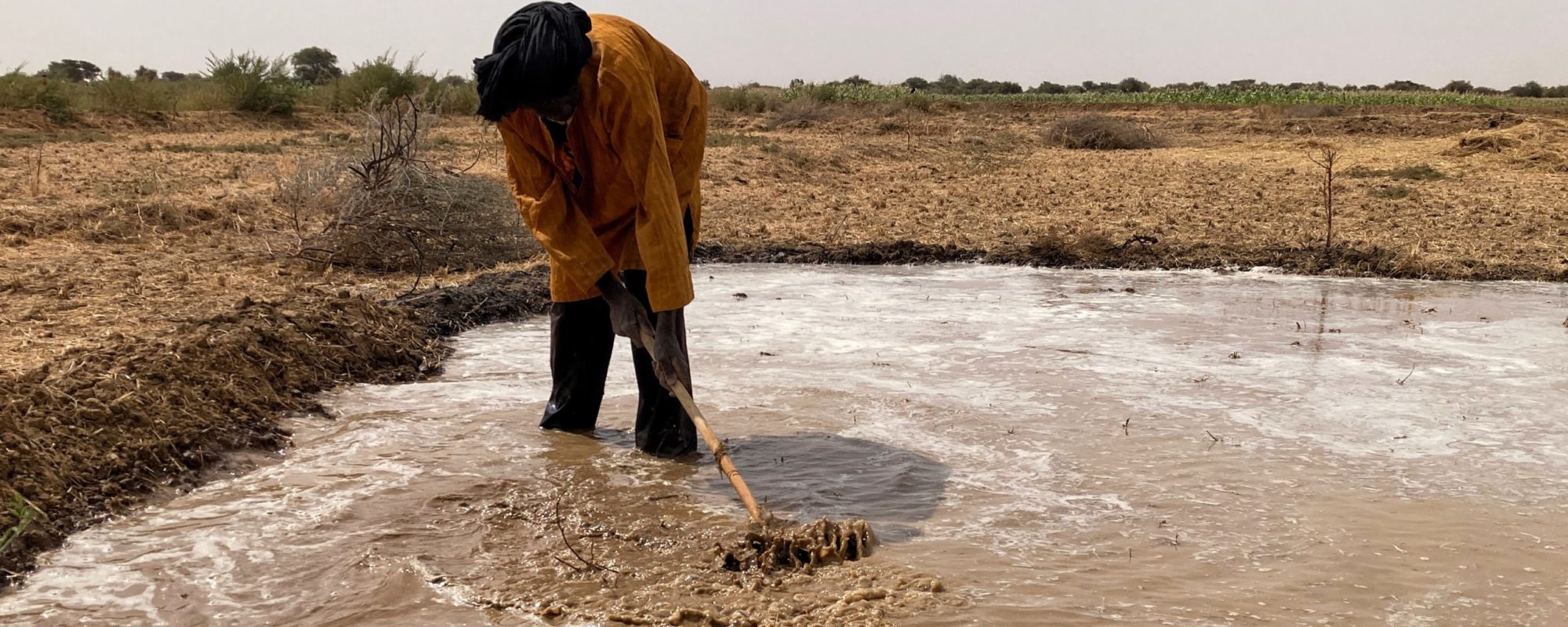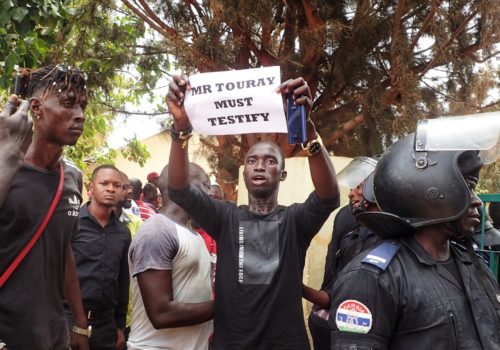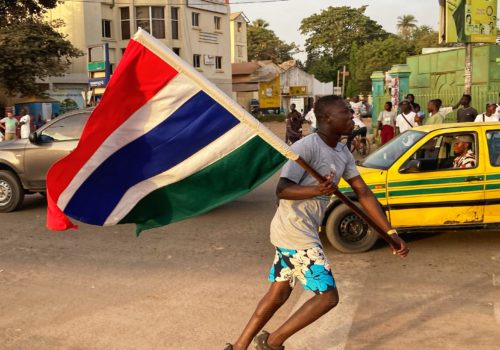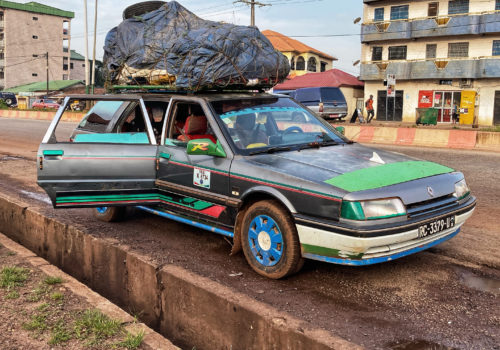DOGUI-DOMBI, Senegal — “50 years ago, you would have been able to walk across the channel you just canoed across,” Seydi Diol informed me as we sat outside his compound in this village in the north of the country. “You don’t believe me,” he added, “but the river has changed a lot. If the river changes, our lives change.”
The Senegal River, to which Seydi was referring, originates in the highlands of Guinea to the south. Running north through southern Mali, it bears west into the desert’s fringe to form the border between Senegal and Mauritania before spilling into the Atlantic Ocean.
For centuries, residents of the middle area, known as the Futa Toro, developed ingenious ways of using the river’s unique ecosystem to sustain dense complex societies on the shores of the Sahara Desert. However, in the 1970s and 1980s, governments of the region, spurred by catastrophic droughts, dammed the river in a bid to kickstart the region’s development.
The dams fundamentally changed how the river flowed, forcing people in the Futa Toro to abandon or alter their fine-tuned farming, herding and fishing practices and embark upon experiments in irrigated agriculture. Yet almost 50 years later, the promise of self-sufficiency has not been realized and people in Dogui-Dombi are further tied into economic systems over which they have little control.
Cold season notwithstanding, it was over 90 degrees Fahrenheit when I stumbled out of the back of a beat-up seven-seater Peugeot 505 taxi into the blinding sunlight. As the car sped away, I gathered my bags and trudged over to a man in a squat concrete structure by the side of the road. After exchanging greetings and negotiating a price, Harouna Wely brought over his horse, which had been hiding in the shade of a scraggly tree, attached it to his cart and told me to hop on.
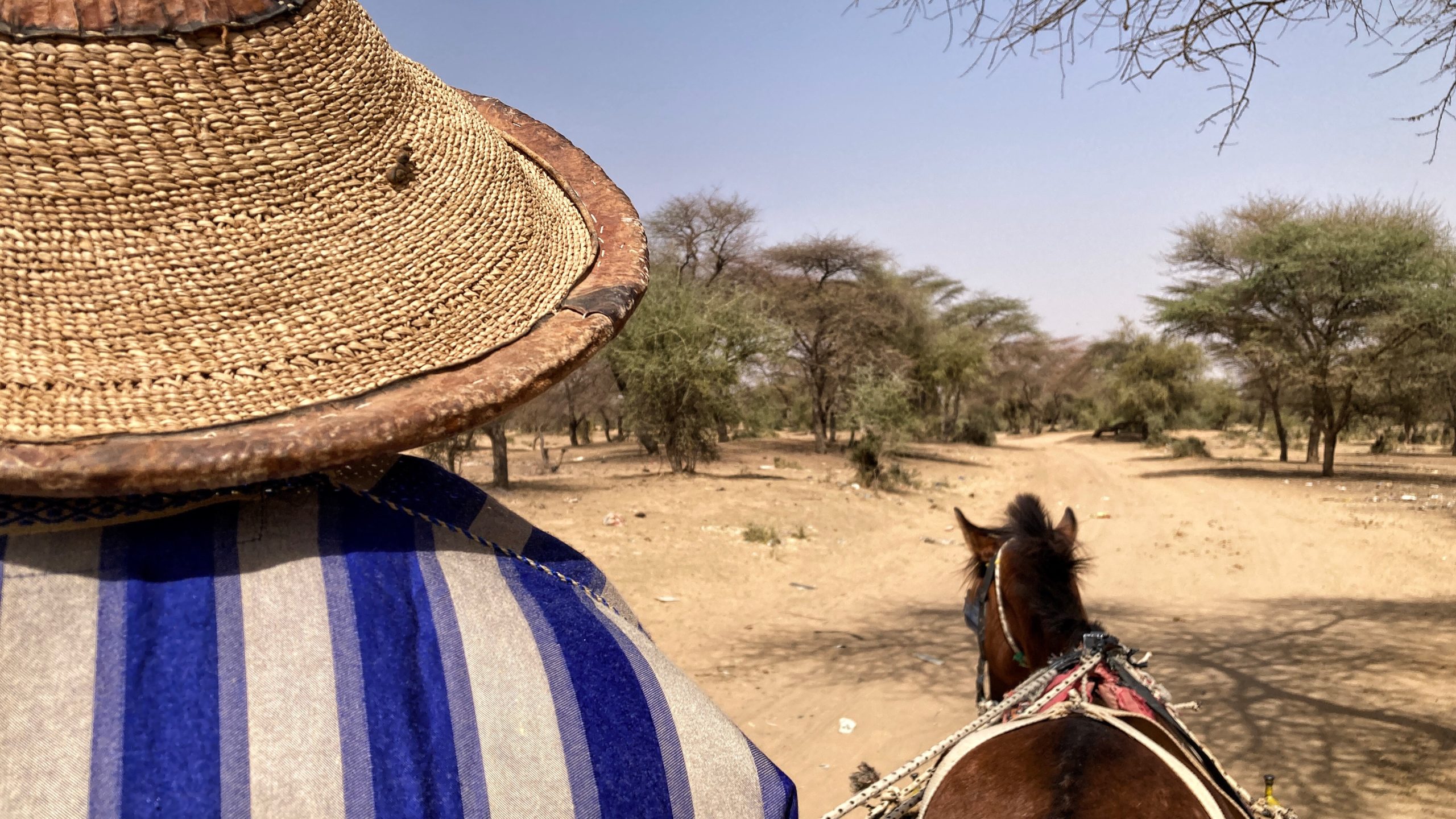
Having spent the previous two weeks travelling through the Futa Toro, I looked out at the flat, sandy expanse dotted with lone trees and confirmed with Harouna that this land was called the jeeri in the Pulaar language of the Futa Toro. After skirting the town of Golere, the tarmac road turned into a dirt path. We passed into a patch of acacia trees, which was noticeably cooler than the jeeri. “This is the waalo,” Harouna informed me as he began identifying all the different new trees and shrubs. As we took a hard right over an empty irrigation canal, a clutch of mud and concrete buildings that make up the village of Dogui-Dombi appeared on the horizon.
Dogui-Dombi was founded almost a hundred years ago when, under the leadership of Samba Ali and Demba Ali, a dozen fishermen and their families left the small town of Dioude Diabe on the main channel of the Senegal River and moved seven miles south to the Doue tributary. After negotiating with Golere’s landed elite, the fishermen, whose last names were all Diol, created two small settlements straddling the tributary. The larger Dogui-Dombi was situated on the west bank near Golere, and the smaller Ndiamel was founded on a small hill on the east bank.[1]
I first met Seydi, the grandson of one of the founders and current chief of Dogui-Dombi, outside his house in Ndiamel at dusk. He is a tall man with rough hands and a quiet demeanor. Born in the early 1950s, he is among the last generation who grew up learning how to live off the old seasonal patterns of the river.
The cycle used to start in June when the rain falling in the highlands of Guinea started to trickle into the Doue tributary, connecting the muddy puddles into a churning creek that grew daily. The rains blew north, and finally, after eight dry months, the first drops usually fell in Dogui-Dombi in July.
After the first few rains, men from each compound would collect some cooking pots, farming tools and their seeds saved from the previous year and walk for a few hours out to the jeeri. They would set up a camp near a weendu, or seasonal pond, where they would stay for around two weeks preparing the soil, seeding their millet and melons and making sure the crop germinated.
Seydi was around ten years old the first time his father took him to their fields in the jeeri. Hearing the lions and hyenas at night was scary, but he was comforted by the presence of his father, uncles and brothers. “We were together,” he said, remembering, “and I was proud to learn to farm with the men.” With a good rain, experienced farmers could expect to harvest enough cereal at the end of the rains to last until the following year.
In September, as the rainy season ended, the swollen river would overflow and inundate the floodplain, known as the waalo, with a sheet of water up to 20 kilometers wide on either side. In Dogui-Dombi, a strong flood could completely encircle the village, making it a temporary island. In some places, the water stood for up to two months, transforming the savannah into a wetland. Ponds were restored, forests replenished and animal life—lions, hyenas, elephants, giraffe and manatees—proliferated.
The life-giving power of the flood was so valued by people in the Futa Toro that ownership of the waalo floodplain was foundational to local political power. Thus, the original settlers of Dogui-Dombi had to negotiate a deal with the elites in Golere who owned the surrounding waalo land in order to farm the waalo in exchange for a portion of their harvest.
However, as a child growing up in the 1950s, Fatoumata Diol would have been only peripherally aware of those complicated local politics. When I asked the jocular septuagenarian about farming the waalo, she described how the fields were seeded by the whole family, who walked in a line parallel to the receding water. Her father punctured the soil with a specialized tool while her mother followed, dropping small round sorghum seeds in the exposed earth. Fatoumata and her friends brought up the rear, covering the holes. As the soil slowly dried out, the sorghum’s roots followed the moisture down into the soil while the stem reached for the sun. Four months later, after minimal upkeep, the sorghum would be ready to harvest.
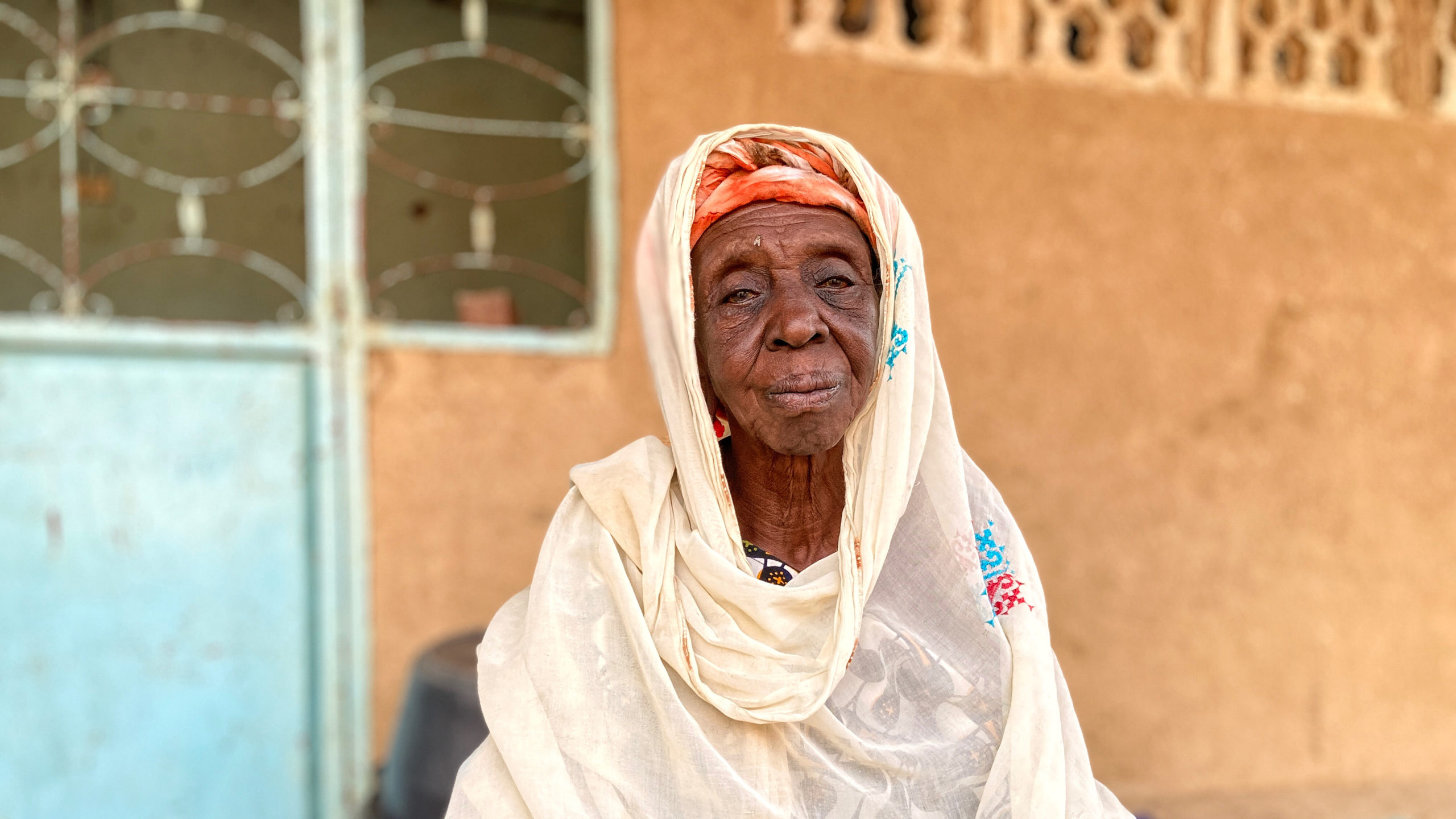
While that kind of recessional agriculture, as it’s known to Western agronomists, is not considered productive in terms of harvest per area land, it requires relatively less labor and fewer material inputs than other farming systems. By the end of the 1960s, around half a million people directly subsisted on the staples grown in the waalo, according to the Food and Agriculture Organization.
Beyond agriculture, people in Dogui-Dombi also depended on the river and the flood for fish. As a child, Djiby Diol spent his afternoons watching his father sit in the shade weaving different kinds of nets and preparing his fishing lines. When he was old enough, his father showed him the seasonal pond they called the Barengol on the island of Morphil where fish hid during the dry season. As he got older, he learned which fishing methods were prohibited to ensure enough fish remained to reproduce the next year. In the Futa Toro alone, people used to catch around 33,000 metric tons of fish per year.
The flood also lit off an explosion of grasses in the waalo that provided fodder for large herds of livestock. While residents of Dogui-Dombi counted only a few goats and sheep between them, nomadic herders would often stay in in the village while they grazed their livestock in the waalo. After clearing the grasses and fertilizing the soil with their manure, the herds used the relatively flat river bank between Dogui-Dombi and Ndiamel to cross onto the island of Morphil, where they drank from the seasonal ponds until the next rainy season.
“Our lives were not easy back then,” Djiby told me as we sat in the shade of his neem tree and let a large rice lunch expand in our stomachs. “You had to work with your hands. We did not have machines or phones to make life easier. But,” he added, “even if you had no money, you could live by farming and fishing.” He sighed, looking over to his two youngest boys. “Now it’s not like that.”
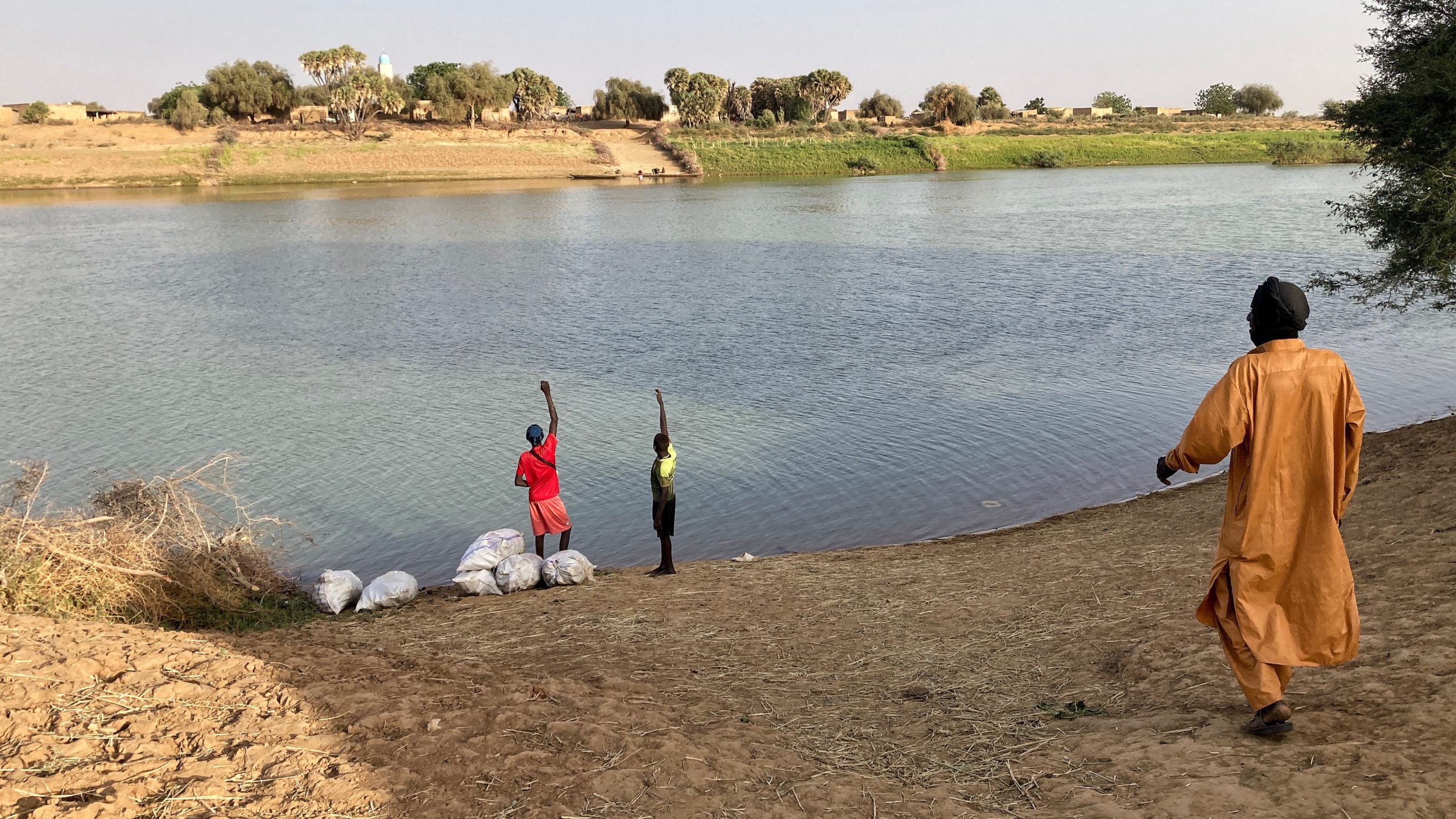
While Seydi, Djiby and Fatoumata grew up eating local cereals, urban, and many rural Senegalese had become dependent on imported foods. That started in the early 1800s, when French colonial interests coerced people in central Senegal to stop growing cereals to eat and instead cultivate peanuts for export. The proceeds were used to import “broken rice”—shards of rice from the factory floor—from what was then French Indochina. At independence in 1960, the government was importing almost twice as much as was being produced at home to meet demand.
That was a concern for the newly independent government, which began looking into where Senegalese could grow their own rice. While the French had tried to use the lower stretches of the Senegal river to produce sugar and other commodities for export, it was not until around World War II that French planners, noting the less fertile clay soils of the waalo, started looking into rice cultivation further upriver in the Futa Toro. After independence, the new government continued those experiments by building small submersion plots in a handful of villages by the river.
Dogui-Dombi was among the villages chosen for the experimental rice plots. Djiby remembers being awed by the bulldozers that, in a matter of days, built a five-foot-high perimeter around a nearby seasonal pond. It was the first time he had seen people re-shape the land so profoundly. When the rains came a few months later, under the direction of idealistic Senegalese agronomists, men from the village carefully uprooted the grass-like plants they had been carefully tending in the nursery and replanted them in straight rows in the new submersion plots where they could control the water level.
At the time, people in Dogui-Dombi still considered rice a rare treat. “When you ate rice, you thought it was so sweet,” Fatoumata said, laughing to herself. “If you ate rice for lunch, you would not wash your hand so that night you could show your friends your hand still smelled like rice.”
Ultimately, the harvests from the experimental plots were lackluster. Achieving the right amount of water at the right time in the rice’s lifecycle was difficult without motor pumps. Getting local political buy-in was difficult as the local elites who owned the waalo were not willing to forfeit the basis of their power.[2] However, the largest obstacle the experimental rice plots faced was the series of droughts that hit West Africa in the 1970s and 1980s.
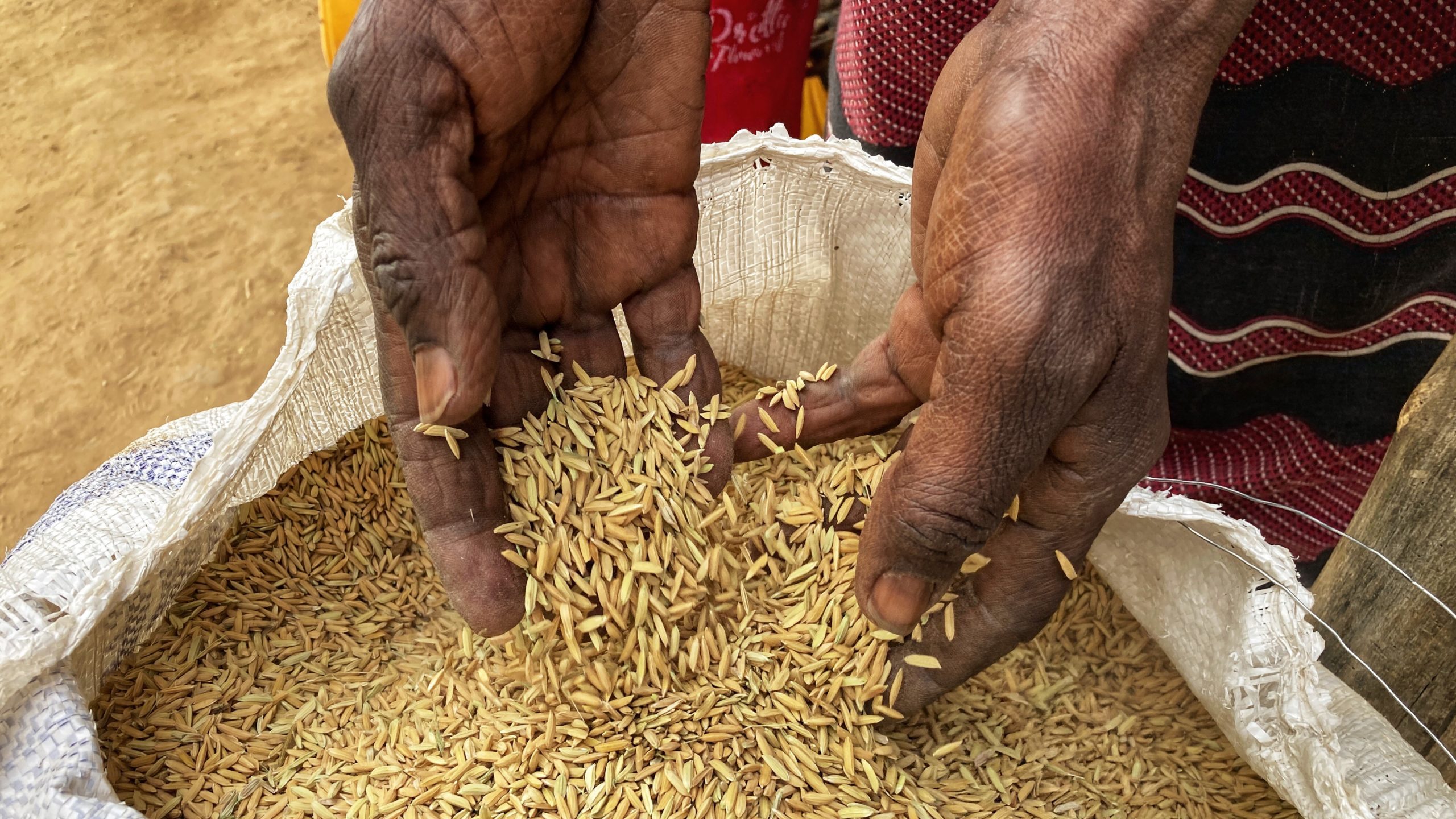
In the late 1960s, the region began to experience a series of under-average rainy seasons. While some people in Dogui-Dombi had been able to eke a crop out of the jeeri, the Doue did not flood and no one cultivated the waalo. The submersion rice plots were abandoned. By the early 1970s, rural food stocks had run out and people switched to buying rice in Golere to survive. Seydi and others in the village remembered 1973 as particularly difficult. “That year we planted, but nothing came,” Seydi said, shaking his head. “That year was very painful.”
The drought affected more than just agriculture. Djiby’s compound on the edge of the village had long played host to passing herders. However, without the grasses that grew in the wake of the yearly floods, they did not stay long. He later saw dozens of livestock corpses on the jeeri. Meanwhile, the river’s fish stocks began to plummet and the Barengol—the seasonal pond on Morphil island—dried out completely. Djiby stayed in Dogui-Dombi, but many of his friends left the village for the cities of Saint Louis, Nouakchott and Dakar to lessen the burden on the household and find work in order to support those who remained.
The droughts of the 1970s and 1980s wreaked havoc across Africa from Senegal to Somalia. Food security became a top priority for foreign donors and regional governments responding to graphic images of the misery.
In 1973 L’Organisation pour la mise en valeur du fleuve Sénégal (OMVS) was established by Senegal, Mali and Mauritania and tasked with overseeing the development of the Senegal River Basin.[3] The next year, at a meeting with donors in Nouakchott, the capital of Mauritania north of Senegal, representatives from OMVS citing a recent United Nations study proposed damming the Senegal river to generate electricity, allow navigation and—most important at the time—use the tamed river to grow enough food to feed themselves.
The plan, which had been around in one form or another since the 1940s, called for two dams. A multipurpose dam in Manantali, Mali, would store water in an artificial lake and slowly release it throughout the dry season, ensuring a constant flow of water downriver, regardless of the season, while generating electricity. Meanwhile, an anti-salt intrusion dam in Diama, Senegal at the mouth of the river would prevent the salt tongue from coming up the river in the dry season.
The planners understood that damming the river would end the yearly flood and thus, in their words, “alter traditional agricultural practices” in the Futa Toro. They suggested that an artificial flood be released every year for 15 to 20 years after the dam’s completion to give communities like Dogui-Dombi time to switch from recessional and rain-fed agriculture to using irrigated plots, which they calculated would bring in much higher yields through two harvests every year.[4] By pitching the dams as a solution to the drought, OMVS were able to secure the necessary funding and construction began in the early 1980s.
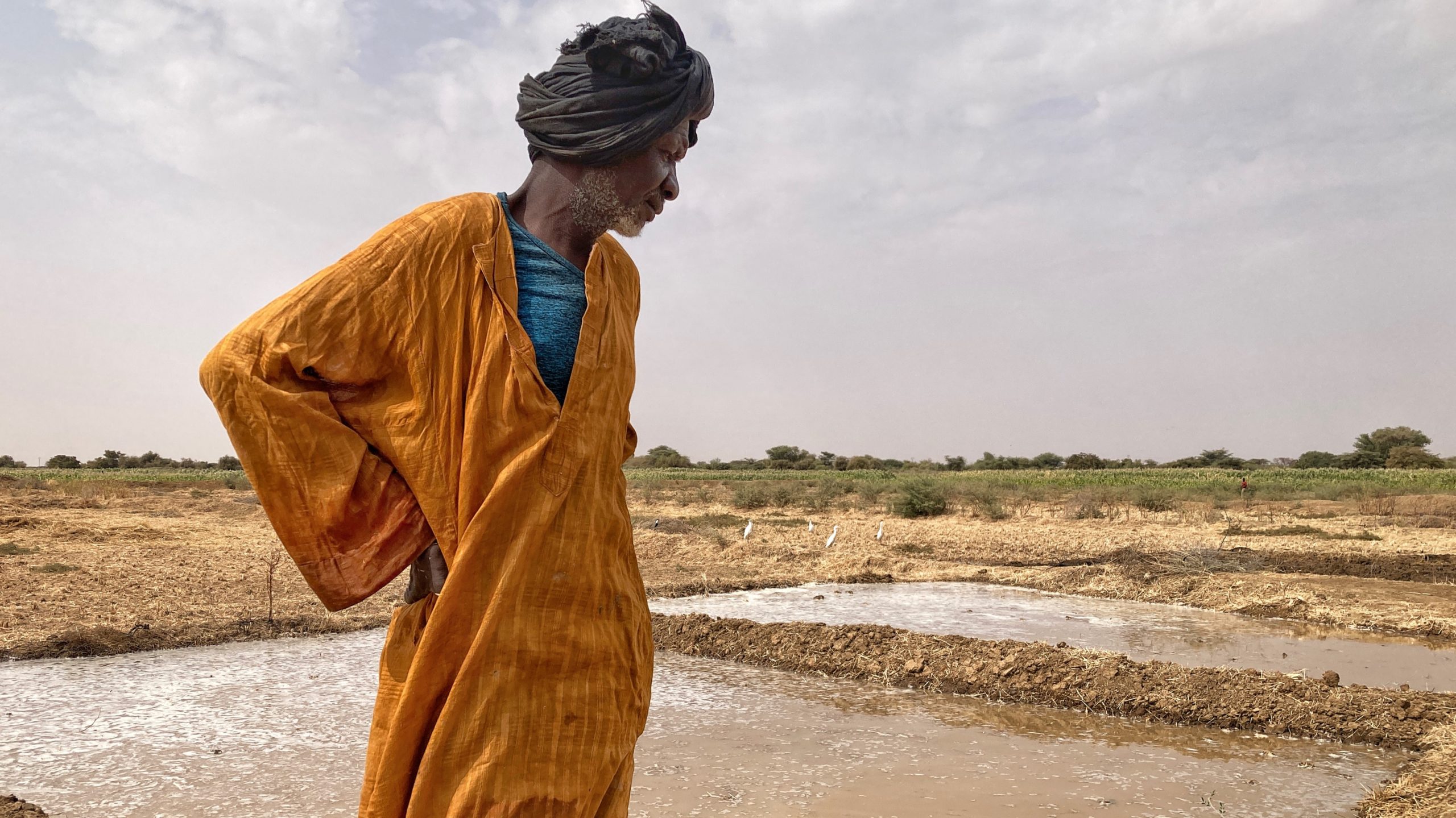
After the dams were inaugurated in the late 1980s, the tributary bisecting Dogui-Dombi started flowing strangely. Despite the decades of poor precipitation, the river level did not drop in the dry season. Even after the rains returned, the river stopped flooding as it used to. Today, although Dogui-Dombi has fresh water year-round, the annual flood is less regular, inundates only half the usual area and does not stay as long as it used to. Therefore people whose lives depended on the river’s seasonality have had to fundamentally change how they provide for themselves.
Without the regular flood, families can no longer rely on the waalo to provide a backup source of grains. Instead, the government and foreign donors have aggressively pushed the building of motor-pump-irrigated perimeters for growing rice, as was the plan when the dams were proposed. As the dams were being built, Dogui-Dombi again became the site of massive earthworks projects as canals were dredged, soil leveled out and sluices installed. A total of around 430 acres of irrigated plots were built outside Dogui-Dombi from the 1980s until the early 2000s.
When I visited the village last month, some 80 acres of these irrigated plots were being used for corn, 50 acres for vegetables, and the rest lay fallow. When I finally found Seydi in the fields, he was shin-deep in a small rectangle of muddy water using a rake to ensure the earth underneath the water was level. After scattering fertilizer across the area, he brought out the rice seed he had saved from last year and began tossing it across the surface of the water.
In a month, he explained, he would carefully uproot the baby rice plants one by one and transplant them into neat rows in another irrigated perimeter behind Ndiamel. That rice would grow and ripen during the dry season and be harvested in June right before the rains. He would wait to judge whether the rains would support farming the jeeri. Toward the end of the rains, he would restart the cycle by seeding another irrigated plot with corn and beans.
This agricultural cycle, with two harvests in a year afforded by irrigation, was what planners imagined when they proposed the dam and the irrigated plots, as I’ve mentioned. However, the yields they forecasted have yet to materialize. Dogui-Dombi and most rural communities across the Futa Toro are still unable to grow enough cereals to feed themselves. Like the rest of the country, they now also subsist on imported rice.
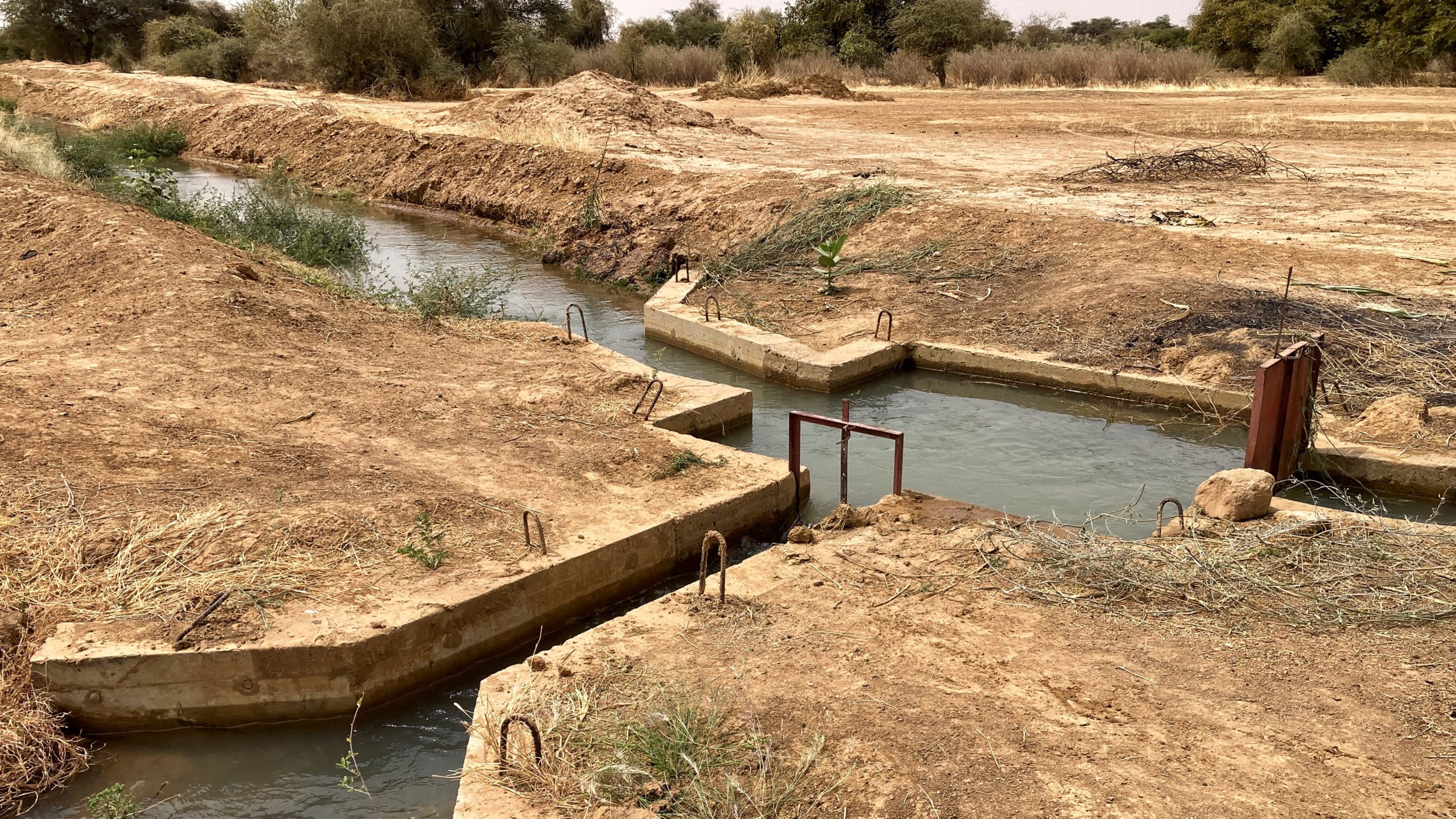
Almost everyone I spoke to in Dogui-Dombi also complained that using the irrigated perimeters is expensive. According to Seydi’s calculations, it cost him 35,000 CFA ($58) just for the fuel to pump enough water into his plot over four months to bring his corn to maturity. The government installed electric pumps a decade ago, but the monthly electricity costs come to around 800,000 CFA ($1,344), far beyond the villagers’ ability to pay. Instead, a “pumpist”—a young mechanic from the village responsible for operating the motor pump—attached a smaller, cheaper gasoline-fed motor pump on a small barge that floats on the river.
Some take out bank loans to pay for fuel and fertilizer. However, “the banks have their own interests,” Seydi said when I brought up the issue of debt. “If you cannot pay them back with cash, then you have to give them part of your crop and you’re worse off than when you started.” He said he usually advises people to avoid taking loans.
Despite irrigation planners’ belief that farmers would eventually come to see the advantages of irrigated agriculture and abandon the waalo and jeeri, farmers in Dogui-Dombi still work those lands even if they are a sliver of what they used to be. Indeed, the two environments are still prized due to the fact that they are essentially free to farm.
The new system has also had profound effects on people’s diet. “Kids today only know rice,” Fatoumata complained pointing to her grandchildren playing on the ground. Without the waalo and with the decrease of the jeeri, people grow less sorghum and millet and rice has become the major staple. Rice is easier to cook, Fatoumata acknowledged, but ultimately, she said, it is not as healthy as the mixed grains people used to consume. “Rice fills your stomach but does not give you strength.”
The dams also permanently altered fish life in the Senegal River. Djiby still checks his nets every day, but has become accustomed to pulling them up empty. The new weaker flood rarely replenishes the Barengol, the seasonal pond now almost devoid of fish. Outside the rainy season, he is no longer able to get enough fish from the river for his own consumption and instead buys frozen fish brought in from the coast.
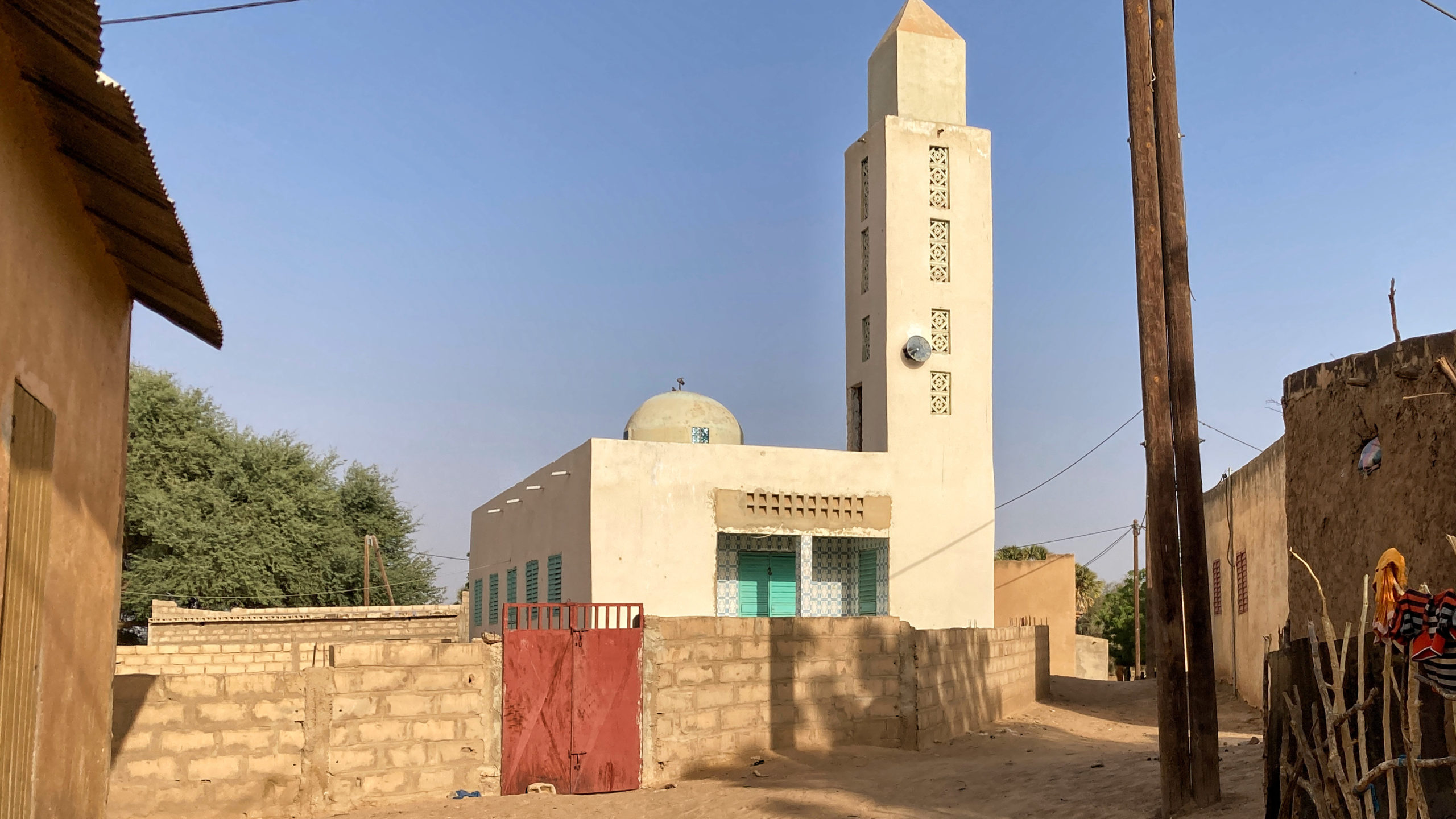
Herders still visit Dogui-Dombi, although they use the landscape differently. They now graze their animals in the irrigated perimeters after the harvest. They also bring their livestock down the river to water them. Without all the seasonal ponds, there is more pressure on river access points. Although Dogui-Dombi has avoided any altercations between residents, Seydi said he was aware of confrontations in other villages that border the river.
To make up for the decline in fish stocks and grasses for livestock, the government and donors are now pursuing projects to use the irrigation to grow fodder and build basins to cultivate fish. Seydi said he welcomes those kinds of projects in the village if they are able to help people provide more for themselves. However, the irony of using the water made available by the dam to grow grasses and raise fish that were decimated by the construction of the dam is not lost on him.
* * *
The rosy future predicted by the dam’s planners bears no resemblance to today’s realities. The capacity to generate electricity at Manantali was realized only in 2000 and provides a fraction of what was intended. Apart from crossing the river perpendicularly, no one uses the waterway to move goods either upriver or downriver. Most fundamentally, Senegal grows only around half of the rice it consumes.
While residents of Dogui-Dombi are less reliant on the rains and the flood, they have become dependent on commodities sourced on the other side of the world. When we spoke on the phone recently, Djiby expressed concern that flour and fertilizer might become even more expensive following Russia’s invasion of Ukraine.
“They talk about food security,” he said, referring to government statements on the radio and aid organizations that visit the village, “but what is food security if we have to depend on other people to help us with the basic things we need to farm?”
Endnotes
[1] The name Dogui-Dombi means “running from mice” in Pulaar. There are a few different stories of how it got its name, involving fears of children (and, more likely, grain)-eating-mice forcing people across the river. Another explanation hinges on the word “dogui,” which according to Djiby can also refer to a thicket of grasses, which he said were cleared by mice to make space for the village. Ndiamel is the plural for the jubjube trees (Ziziphus jujube) that used to dominate the area.
[2] Boone, C. (2003). Political Topographies of the African State: Territorial Authority and Institutional Choice (Cambridge Studies in Comparative Politics). Cambridge: Cambridge University Press.
[3] That was the third time since their independence these countries had formed a transnational organization to oversee the development of the Senegal River Basin. The previous incarnations had disintegrated due to political strife among member countries. See Wall, R. (2021). 1970s Drought, State Crisis, and Opportunities for Transnational River Development in the Senegal Basin. African Studies Review, 64(4), 776-802 for more details.
[4] See Gannett Fleming Corddry and Carptenter, Inc. (1980) Assessment of Environmental effects of proposed developments in the Senegal River Basin. https://pdf.usaid.gov/pdf_docs/Pnaaj571.pdf
Top photo: Seydi Diol, shin-deep in muddy water, using a rake to ensure the earth underneath the water is level so he can plant rice seeds

